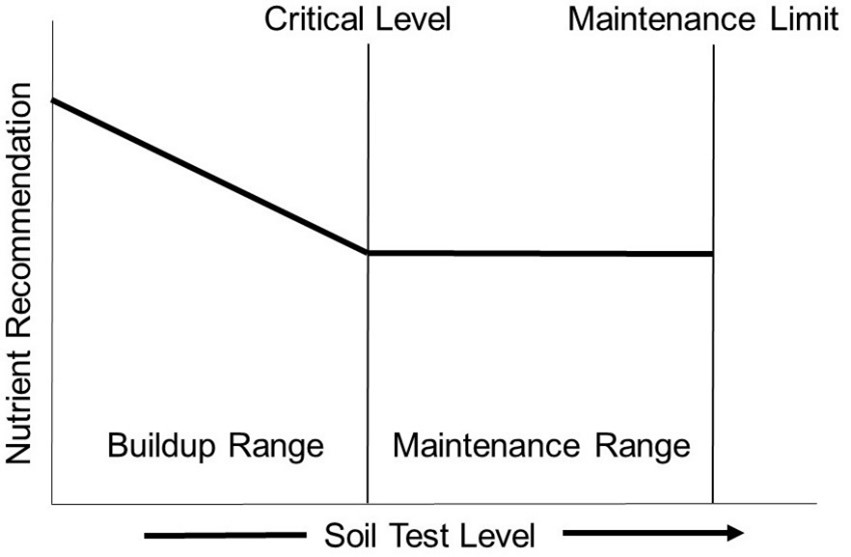To apply or not to apply potassium fertilizer in 2022, that is the question
Soybean producers can make important potash allocation decisions this spring by combining information contained in recent soil test reports and the new tri-state fertilizer recommendations.

The high price of potash has many soybean producers questioning whether they can eliminate spring potash applications without adversely affecting short-term or long-term yields. Hopefully, most producers have the information they need in the form of recent soil test reports to answer this question on a field-by-field basis. This article demonstrates how soil test potassium soil test levels can be used to help producers make fertilizer allocation decisions.
Another important piece of the puzzle is the Tri-State Fertilizer Recommendations. This publication contains research-based information that supports MSU’s nutrient management recommendations for corn, soybeans, wheat and alfalfa.
The Michigan State University Extension nutrient recommendation framework for potassium (K) (Figure 1) includes the build and maintain philosophy. When soil test levels are below the critical level, K fertilizer recommendations are higher than crop removal to build up K levels in the soil over a three-to-four-year period. At soil test levels between the critical level and the maintenance limit, K fertilizer is recommended to approximate crop removal and maintain soil test levels within this range.
Maintaining K soil test levels in the maintenance range is critical to producing high yields over the long-term. It also takes time to build-up K soil test levels as once they fall below the critical level soil K-fixation increases rapidly resulting in a greater rate of fertilizer to increase soil test levels. When soil test levels exceed the maintenance limit, no additional nutrient applications are recommended.

The critical levels and maintenance limits for K are listed in table 1. Producers can make important potash allocation decisions by comparing their K soil test levels to the values reported in table 1. If your K soil tests are at least 10 ppm above the critical level, eliminating potash applications in 2022 should not adversely affect soybean yields or drop K soil test levels below the critical level. The K levels reported in table 1 are Mehlich III values. If your soil test reports K levels as ammonium acetate values, you can easily convert these to Mehlich III values by multiplying by 1.14.
|
Table 1. Potassium critical levels and maintenance limits for soybean (based upon revised tri-state fertilizer recommendations). | ||
|---|---|---|
|
Cation Exchange Capacity (meq/100 g) |
*Critical level (ppm) |
*Maintenance limit (ppm) |
|
< 5 |
100 |
130 |
|
> 5 |
120 |
170 |
*These soil test levels apply when K is reported as Mehlich III values and not converted to ammonium acetate equivalent.
If your soil test levels are less than 10 ppm above the critical levels, a maintenance level K application may be warranted to keep the soil test from falling below the critical level. As soybeans remove 1.15 pounds of K2O per bushel, the maintenance application rate for a 60 bushel per acre soybean crop is 69 pounds of actual K2O or 115 pounds of potash (0-0-60) per acre.
Potash applications are highly recommended whenever the K soil test level is below the critical level as a yield response is more likely. Producers should be aware of potential saltation issues that can occur with high rates of K fertilizer on fine-textured soils. Environmental factors may exacerbate these issues.
How much will my potassium soil test levels change if I decide not to add potash this year?
Soil texture plays a large role in answering this question with K soil test levels dropping faster in coarse-textured soils than in fine-textured soils. In general, soil test K levels will be reduced by 1 ppm for every 8 to 20 pounds of K20 removed by the crop.
An example calculation demonstrating how potassium soil test levels are expected to change when potash will not be applied to very coarse-textured soils and very fine-textured soils is provided below:
For 60 bushels of soybeans per acre:
- 60 bu/acre x 1.15 lbs. K2O/bu = 69 lbs. K2O/acre removed by the crop
- 69 ÷ 8 = ~9 ppm decrease in the K soil test level in coarse-textured soils
- 69 ÷ 20 = ~4 ppm decrease in the K soil test level in fine-textured soils
Recent soil test reports, the Tri-State Fertilizer Recommendations and familiarity with field-specific soil variabilities will prove to be very valuable this year as when combined together these resources provide essential information for making those potash allocation decisions.
This article was produced by a partnership between Michigan State University Extension and the Michigan Soybean Committee.



 Print
Print Email
Email